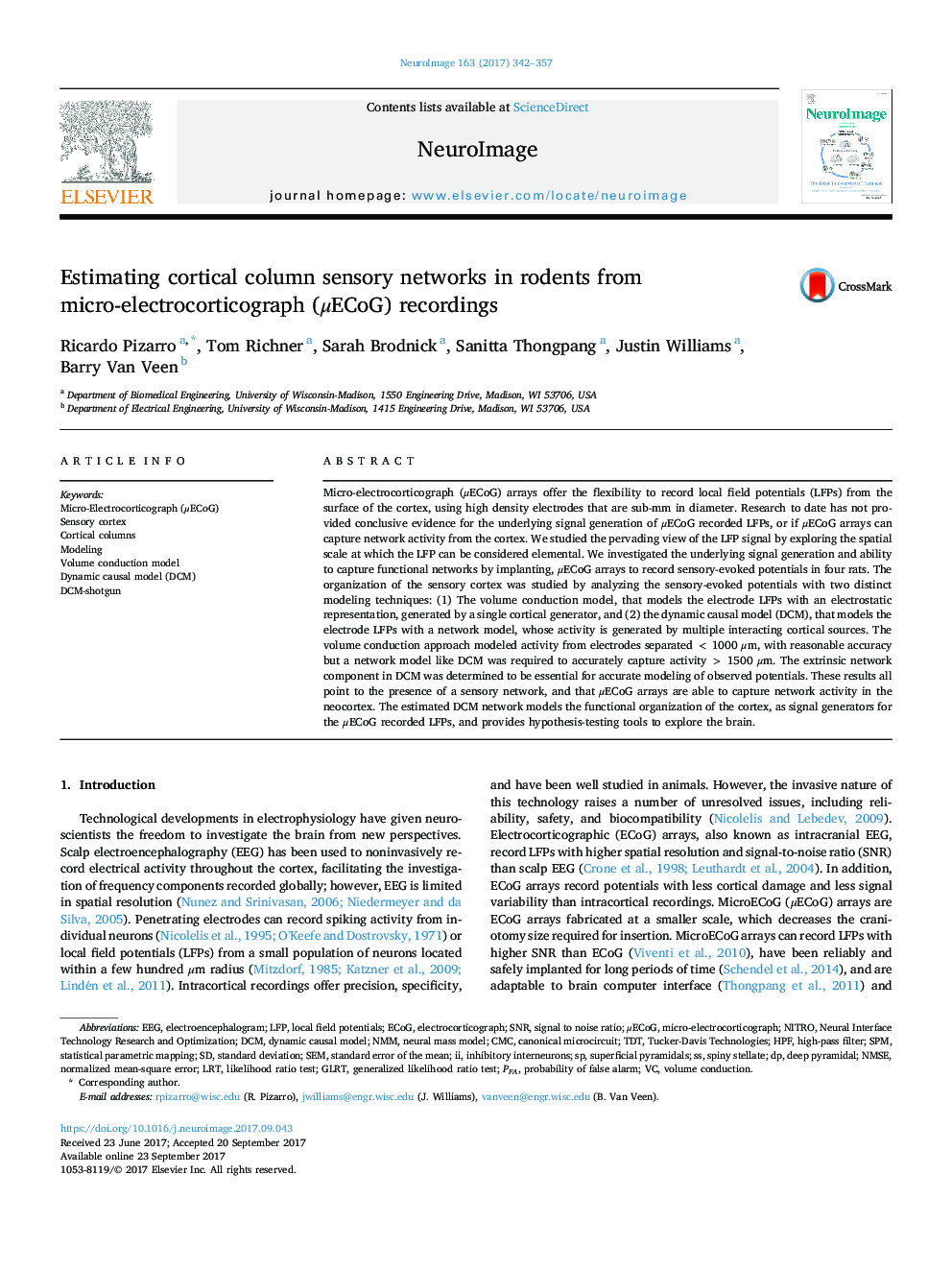| کد مقاله | کد نشریه | سال انتشار | مقاله انگلیسی | نسخه تمام متن |
|---|---|---|---|---|
| 5630801 | 1580847 | 2017 | 16 صفحه PDF | دانلود رایگان |

- DCM accurately describes the potentials at all electrodes, while the volume conduction model is limited to activity located <1000 μm.
- DCM-shotgun is a versatile initialization strategy to find a set of initial parameters that result in obtaining a high-fidelity DCM solution.
- μECoG arrays can capture and characterize neocortex network, demonstrated on the rodent sensory cortex.
- The estimated sensory network illustrates the local organization of the cortex and provides signal generators for the μECoG recorded LFPs.
Micro-electrocorticograph (μECoG) arrays offer the flexibility to record local field potentials (LFPs) from the surface of the cortex, using high density electrodes that are sub-mm in diameter. Research to date has not provided conclusive evidence for the underlying signal generation of μECoG recorded LFPs, or if μECoG arrays can capture network activity from the cortex. We studied the pervading view of the LFP signal by exploring the spatial scale at which the LFP can be considered elemental. We investigated the underlying signal generation and ability to capture functional networks by implanting, μECoG arrays to record sensory-evoked potentials in four rats. The organization of the sensory cortex was studied by analyzing the sensory-evoked potentials with two distinct modeling techniques: (1) The volume conduction model, that models the electrode LFPs with an electrostatic representation, generated by a single cortical generator, and (2) the dynamic causal model (DCM), that models the electrode LFPs with a network model, whose activity is generated by multiple interacting cortical sources. The volume conduction approach modeled activity from electrodes separated < 1000 μm, with reasonable accuracy but a network model like DCM was required to accurately capture activity > 1500 μm. The extrinsic network component in DCM was determined to be essential for accurate modeling of observed potentials. These results all point to the presence of a sensory network, and that μECoG arrays are able to capture network activity in the neocortex. The estimated DCM network models the functional organization of the cortex, as signal generators for the μECoG recorded LFPs, and provides hypothesis-testing tools to explore the brain.
Journal: NeuroImage - Volume 163, December 2017, Pages 342-357